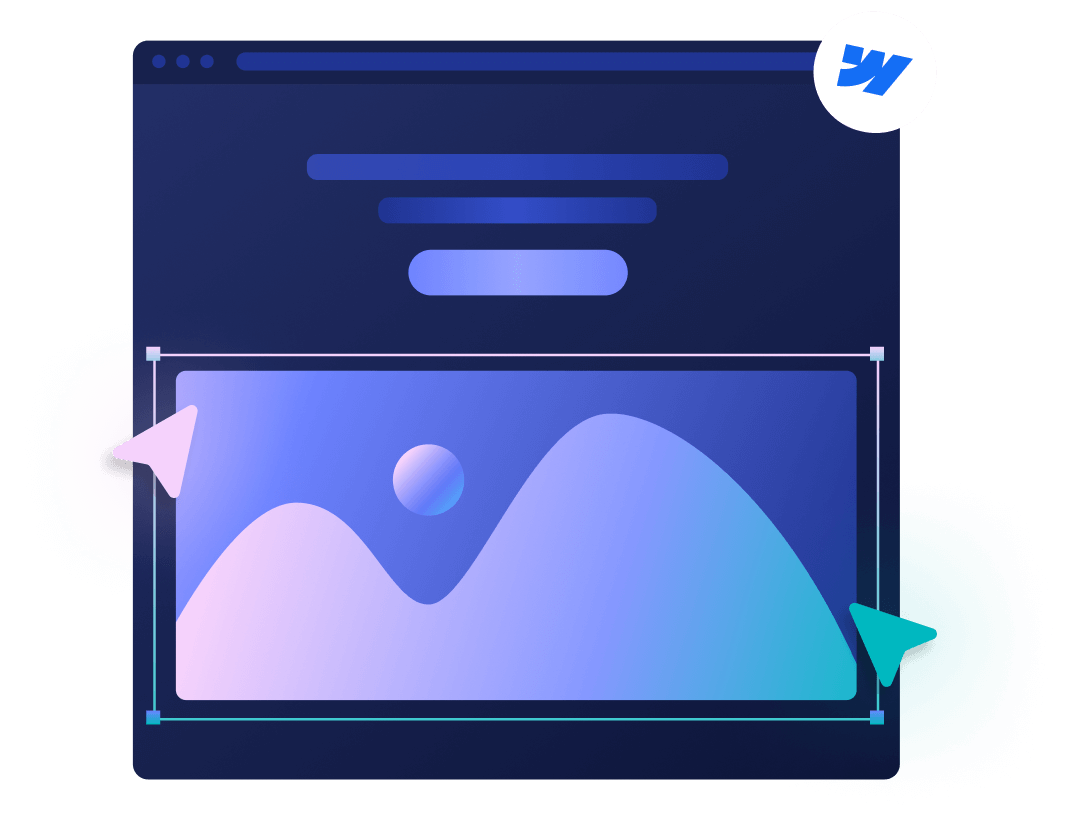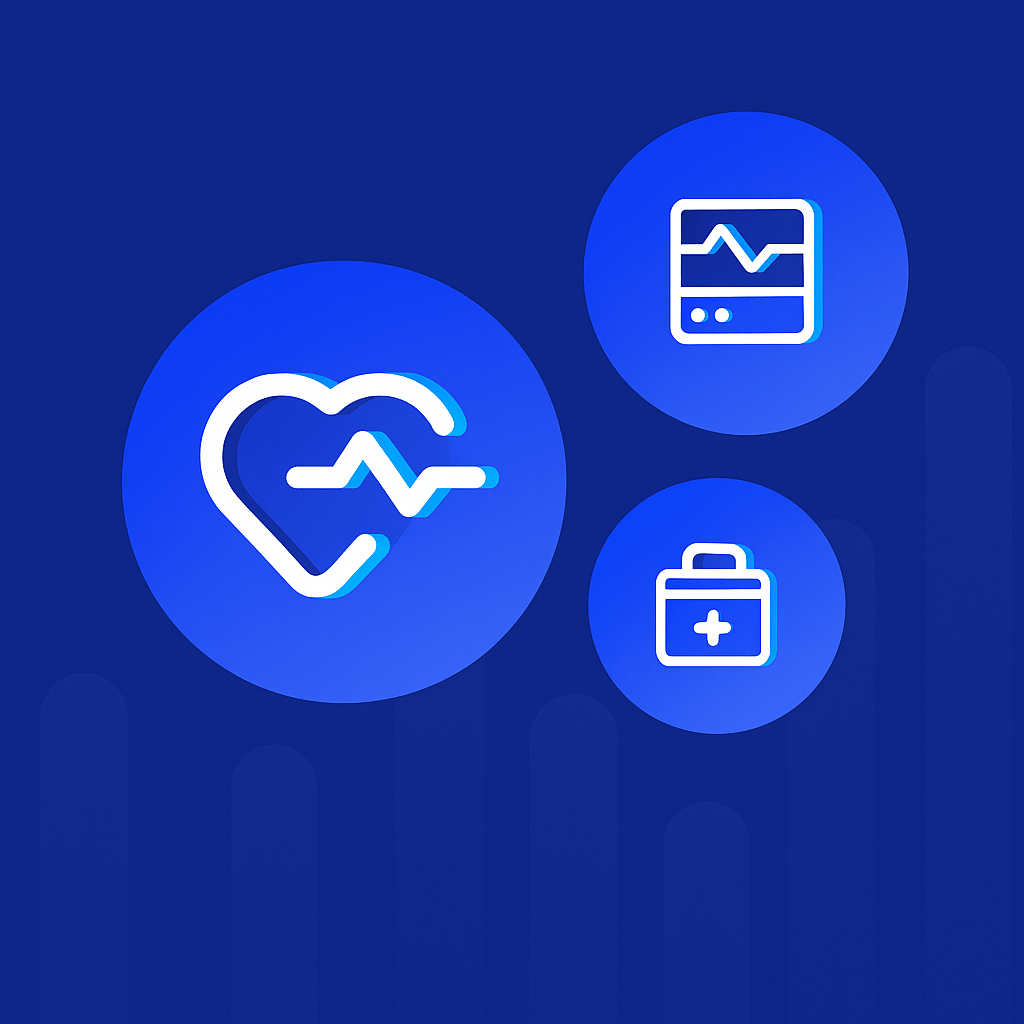
How to Choose a HIPAA-Compliant Healthcare Website Agency
Key takeaways
- Not all healthcare websites need HIPAA; only those handling PHI do.
- Webflow is best for non-PHI sites like marketing or education.
- HIPAA projects require encryption, secure hosting, and BAAs.
- Agencies should show healthcare-specific case studies.
- Accessibility, SEO, and UX are critical alongside compliance.
- The right partner reduces risk and builds trust.
Not every healthcare website has the same compliance needs. A patient portal or intake form that collects medical details must follow HIPAA to the letter. But a hospital’s marketing site, a clinic’s educational blog, or a medical association’s membership page doesn’t process protected health information (PHI) and doesn’t require HIPAA compliance.
The real challenge is finding an agency that understands the difference and can deliver accordingly: compliance where it’s required and best-practice design, SEO, and UX everywhere else.
In this article, I’ll walk you through how to screen a healthcare website agency before committing to a project. I’ll teach you what to ask, what to watch for, and how to choose a partner who can build a site that supports your goals.
When Does a Healthcare Website Need HIPAA Compliance?
Not all healthcare websites fall under HIPAA rules. The key question is whether your site will handle PHI, which refers to any identifiable data related to a patient’s health, treatment, or payment. If it does, HIPAA compliance is a necessity. If it doesn’t, HIPAA doesn’t apply.
Here are examples of sites that do require HIPAA compliance:
- Patient portals with login access to records or lab results
- Online appointment scheduling systems tied to medical data
- Intake or contact forms collecting symptoms, medical history, or insurance details
- Telehealth platforms or video visit tools
Here are examples of healthcare sites that do not require HIPAA compliance:
- Hospital or clinic marketing websites
- Blogs and educational resource hubs
- Research institute pages sharing studies or findings
- Association or non-profit membership sites
- Healthcare startups
- Healthcare software solutions and apps
- Healthcare marketplaces
Choosing a Healthcare Website Agency: With or Without HIPAA Needs
The best healthcare websites combine security, accessibility, and modern design, regardless of whether they need HIPAA compliance or not. This means the agency you choose should back up their claims with real examples, technical expertise, and a clear understanding of industry design and SEO standards.
Here are four key aspects to look for when evaluating potential partners.
Experience and Real-World Examples
The kind of experience you should look for depends on your project.
If your site will handle PHI, the agency you hire should have a track record with covered entities such as clinics, multi-location practices, or telehealth providers. Their portfolio should include compliance-critical elements like secure patient intake forms and HIPAA-compliant hosting setups. In fact, the U.S. Department of Health & Human Services (HHS) highlights that even something as simple as a contact form can create compliance risks if not encrypted and stored properly.
However, if your site will not handle PHI, you should still expect the agency to showcase successful projects in the healthcare industry, such as marketing sites, education hubs, or healthcare SaaS product sites. Here, you should be looking for proof of responsive design, ADA accessibility, strong SEO performance, and conversion-focused UX.
In both cases, an agency with real experience should be able to explain how they solved those issues in previous builds and show concrete results.
Technical Expertise
The agency you shortlist should be able to explain, in clear terms, how they build websites that are both secure and scalable. But what that means will depend on whether your site processes PHI.
For HIPAA projects, technical expertise means understanding the safeguards in the HIPAA Security Rule, like encryption, access controls, and audit logging. It also means knowing how to implement them through HIPAA-compliant hosting and third-party integrations.
For non-HIPAA projects, technical expertise still matters, but the focus shifts to performance and reliability. This includes factors like:
- Fast load times
- Clean code
- Mobile-first builds
- ADA accessibility
A strong agency will also know how to integrate tools like CRMs, analytics, and automation platforms securely, regardless of HIPAA requirements.
In either case, the agency should back up its claims with examples of past projects. For example, Flow Ninja helped build Pilot, a digital healthcare clinic in Australia. We combined Webflow development with custom code and external tools to deliver a fast, scalable website and a seamless checkout experience.
UX, Accessibility, and SEO Best Practices
HIPAA compliance is crucial for sites handling PHI, but every healthcare website also needs to perform well for patients and search engines. A capable agency should design with users, accessibility, and visibility in mind.
For example, good healthcare websites need to meet accessibility standards by following ADA and WCAG guidelines. This ensures patients with disabilities can navigate forms, read content, and interact with portals.
From a design perspective, modern websites should also be mobile-friendly through responsive design and provide intuitive, UX-friendly navigation. Patients need to find appointment scheduling, contact details, or resources quickly and without confusion. When they can’t, this is a potential problem that can affect conversions.
Finally, SEO and GEO should also be in the picture. Your healthcare website should be built with fast load speeds, metadata, structured data, and content hierarchy that improve your visibility in search engines and LLMs.
Integration of Advanced Digital Health Features
Your website should represent your brand in the best possible light and serve as a contact point for potential clients to reach you. However, in the healthcare sector, websites are often also the first stop for patients seeking care.
That’s why the agency you choose to build your platform may need to have experience setting up the following:
- Practice-specific apps and CRMs that make it easier to handle scheduling, reminders, and patient intake directly online.
- Patient education libraries that give visitors reliable resources on conditions, treatments, or preventive care, reducing misinformation and saving your staff time.
- Symptom checkers and chatbots that guide patients before they book an appointment, helping them understand whether they need urgent care, a consultation, or self-care at home.
- Telehealth integrations that allow patients to book and attend secure video visits without leaving your site.
Depending on your area of healthcare and your website’s purpose, these tools may not be just nice-to-haves. According to the McKinsey COVID-19 Consumer Survey, around 22% of all outpatient visits now occur virtually, compared to less than 1% before the pandemic. Going forward, patients will likely expect that same level of online convenience.
But it’s important to remember that features involving PHI, like intake forms, chatbots, or telehealth, fall under HIPAA and must be handled through compliant systems. For projects that don’t process PHI, such as informational or educational resources, platforms like Webflow are an excellent choice, offering speed, scalability, and design flexibility.
Questions to Ask Before Hiring a Medical Website Agency
Even the best-looking portfolio doesn’t guarantee an agency understands healthcare’s unique requirements. The fastest way to find out is by asking direct, specific questions. If your project involves PHI, some of these are critical for compliance. If it doesn’t, they’re still important to gauge whether the agency takes security, development, and design seriously.
Here are the six most important questions that you should ask first.
1. Will You Sign a BAA (if PHI is involved)?
A Business Associate Agreement is required under HIPAA whenever an outside vendor handles protected health information. Without it, the Office for Civil Rights (OCR) can fine both the healthcare provider and the vendor for violations.
In 2019, a medical imaging company paid over $3 million in penalties partly because it failed to establish proper BAAs with its partners.
A qualified agency should confirm that they always sign a BAA, and they should be able to explain what responsibilities it covers. For example, safeguarding PHI, breach notification, and subcontractor compliance. This is the baseline legal protection you can’t launch without.
For non-PHI sites (like marketing or education), a BAA is not needed, but the agency should still explain how it handles general data securely.
Follow-up questions you can ask:
- Can you share a sample BAA you’ve signed with past clients?
- How do you handle subcontractors or vendors under the BAA?
- What’s your process for breach notification under the agreement?
2. Which Hosting Providers or Platforms Do You Work With?
HIPAA projects require hosting providers that sign BAAs and offer compliance-ready features. Some examples include:
- Amazon Web Services (AWS) with HIPAA-eligible services
- Google Cloud Platform with HIPAA-compliant products
- Microsoft Azure for healthcare
Ask which provider they use, whether they’ve executed a BAA with them, and how they’ve implemented safeguards like encrypted backups and audit logging.
For non-PHI projects, Webflow can be a great option. Even though it’s not HIPAA-compliant, it delivers fast, secure, and scalable websites for marketing and patient education use cases.
Follow-up questions you can ask:
- Do you have experience setting up healthcare sites on AWS, Google Cloud, or Azure?
- How do you configure backups and disaster recovery on that platform?
- For Webflow builds, how do you secure non-PHI data?
3. How Do You Handle Forms, Portals, and Third-Party Integrations?
Patient data often enters your system through forms, chat tools, or online portals, all of which are common failure points if not set up properly.
A qualified agency should explain how they keep that information secure, such as encrypting form submissions, protecting portal logins with timeouts or multi-step authentication, and only using third-party tools that are covered by a signed BAA.
For non-PHI sites, forms and integrations still matter, but the focus is on usability, speed, and basic security (such as HTTPS, spam protection, and CRM integrations).
Follow-up questions you can ask:
- Can you walk me through the workflow of a secure patient form?
- Which third-party tools have you successfully integrated for other healthcare clients?
- How do you verify whether a vendor or plugin is HIPAA-compliant?
4. What Security Safeguards (Encryption, MFA, Monitoring) Do You Implement?
For PHI sites, agencies should cover encryption, access controls, MFA, and audit logs. These are concrete safeguards required by the HIPAA Security Rule.
If the agency you’re negotiating with has done this before, ask them to share examples. For instance, building a patient portal where only authorized roles (e.g., physicians vs. front desk staff) could access certain records, with all activity recorded for compliance audits.
This is not necessary for non-PHI sites. The safeguards here can be lighter, but you should still expect HTTPS, regular monitoring, and protection against common vulnerabilities.
Follow-up questions you can ask:
- Which encryption standards do you use for data at rest and in transit?
- How do you enforce role-based access across different types of users?
- Can your system generate audit logs for compliance reviews?
5. How Do You Balance Compliance With Design and SEO?
Building healthcare websites is more technically demanding than building standard business websites, so what can happen is that healthcare-specific website design and SEO are sidelined in the process.
When you ask this question, an agency should show real examples. For instance, a HIPAA-compliant portal that loads in under 2.5 seconds, or an ADA-accessible site that also ranks on the first page for key search terms.
This question is crucial regardless of PHI. Even without HIPAA requirements, healthcare websites need to be fast, mobile-friendly, accessible, and SEO-optimized.
If you want to go deeper in your screening, you can also ask:
- Can you show examples of sites you’ve built that are both compliant and mobile-friendly?
- What performance metrics (page speed, Core Web Vitals) do you aim for?
- How do you ensure accessibility (ADA/WCAG compliance) while still optimizing for SEO best practices?
6. Can You Show References From Past Healthcare Clients?
I’m covering this question last, but it’s definitely not the least important. In fact, it may be the most important. Regardless of what answers you get to the previous five questions, references should be the factor that influences your decision the most.
If you’re handling PHI, compliance is critical. But if you’re building a non-PHI project, look for references that highlight outcomes like increased traffic, stronger engagement, or faster publishing cycles.
Don’t hesitate to ask for contact details of past healthcare clients and follow up with questions like:
- Did the agency deliver a HIPAA-compliant site that passed legal or IT reviews?
- How did they handle ongoing updates or support?
- Were they proactive in explaining requirements, or did the client need to drive the conversation?
Bottom Line
Choosing a HIPAA-compliant web agency isn’t just about ticking compliance boxes, but about finding a partner who can balance security, usability, design, and future growth.
The right agency will prove their healthcare experience, explain how they protect patient data, and show references that back up their claims. And whether your project requires HIPAA compliance or not, they should deliver a site that’s accessible, fast, and ready for modern features like telehealth.
Flow Ninja has already partnered with and assisted in building several high-profile healthcare websites on Webflow that don’t handle patient data or store PHI. Notable examples include:
- Nursa: A staffing marketplace that connects nurses with healthcare facilities.
- Klara: A healthcare communication platform with a marketing site built to showcase its product features and benefits.
- Juniper: A women’s health company using Webflow to educate and engage visitors through content and resources.
If you’re inspired by these examples, Flow Ninja can help you build a secure, high-performing, and scalable healthcare website tailored to your needs. Schedule a call today, and let’s discuss how we can bring your healthcare project to life.
FAQ
What questions should I ask a healthcare website agency?
Ask about their healthcare experience, how they handle PHI (if relevant), whether they sign BAAs (if needed), their hosting solutions, and how they balance compliance with modern design and SEO. Even for non-PHI projects, their answers should show knowledge of accessibility, security, and scalability.
Does every healthcare website need HIPAA compliance?
No, HIPAA only applies to websites that collect, store, or transmit PHI, such as patient portals or telehealth platforms. Marketing sites, educational resources, or product landing pages don’t require HIPAA but should still follow best practices for security and accessibility.
Can a Webflow website be HIPAA-compliant?
Webflow itself isn’t HIPAA-compliant and does not sign BAAs.That means it cannot directly host or process PHI. However, Webflow is a strong choice for non-PHI healthcare sites, such as marketing, education, or community platforms, where speed, SEO, and scalability matter the most. For PHI, you’ll need external integrations or alternative platforms.
Do healthcare practices outside the U.S. need HIPAA or GDPR compliance?
HIPAA applies only to U.S. healthcare providers and their partners. Practices in other regions must comply with local laws like GDPR in the EU, PIPEDA in Canada, or the UK’s Data Protection Act.
What security features should a healthcare website include?
All healthcare sites should use SSL/TLS encryption, spam-protected forms, and secure hosting. For PHI projects, additional safeguards like multi-factor authentication, role-based access, and audit logging are required under the HIPAA Security Rule.
How much does it cost to hire a healthcare web design agency?
Budgets typically start around $15,000–$30,000 for smaller practices and can exceed $100,000 for enterprise-level healthcare systems. Costs depend on compliance requirements, scope, integrations, and ongoing support needs.






.svg)






-min.png)



.png)









.svg)

.png)
.png)
.webp)
.svg)

